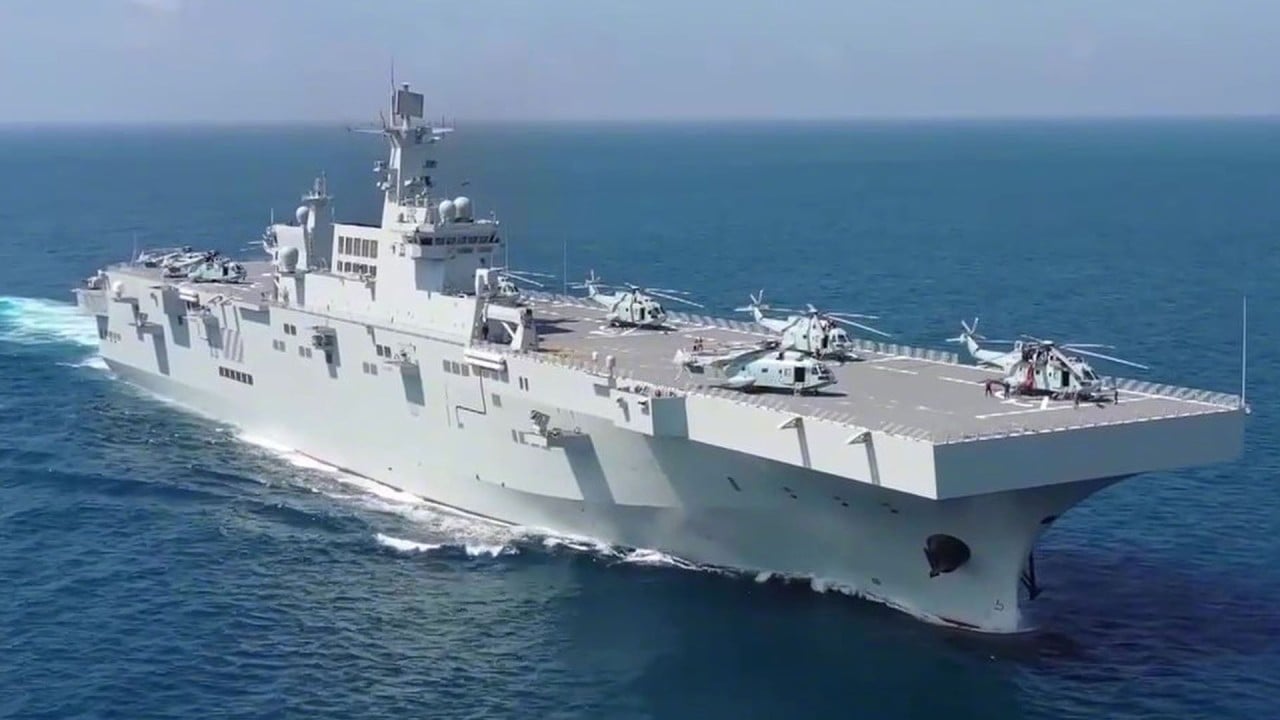
US-China race for surveillance supremacy in South China Sea risks a needless clash
- China is catching up but still can’t match the US’ network of spy planes, surface vessels, submarines, satellites, and drones. In the process, both are testing the bounds of existing international law and increasing the likelihood of confrontation
A country needs superior maritime domain awareness to control maritime space. To this end, China has made impressive advances in the number, variety and quality of its intelligence, surveillance and reconnaissance (ISR) capabilities in the South China Sea.
The United States’ ISR capabilities there are still superior. Nevertheless, China’s attempts to close the gap and the US’ strides to maintain its supremacy are challenging the boundaries of international law and increasing the likelihood of international incidents.
China’s response has been to develop on some South China Sea features it occupies the capability to neutralise US ISR in time of conflict. For China, these installations are key to its security and it is not about to budge no matter how much the US and others bluster.
These dynamics also have serious implications for US allies and partners in Asia. Indeed, the countries that provide places for American ISR, including Malaysia, the Philippines and Singapore, could become China’s targets if US-China hostilities break out.

01:50
China’s most advanced amphibious assault ship likely to be deployed in disputed South China Sea
According to Felix Chang, a former US intelligence officer, China’s improved ISR capabilities in the South China Sea have been demonstrated by its maritime forces’ faster response times to events there. Chang suggests China’s intent is to “develop an ISR network capable of targeting ships far out to sea”.
Currently, China still cannot match the US’ huge network of ISR planes, surface vessels, submarines, satellites, and drones – many with specialised functions, like the sub hunter Impeccable. The US has by far the world’s largest and most capable force of spy planes, known as signals intelligence (SIGINT) aircraft.
Why India’s maritime interests are closer to China than the US
Moreover, most of the US Navy’s top-of-the-line combatants, like the Ticonderoga-class cruisers and Arleigh Burke-class destroyers, as well as its submarines, are equipped to carry out SIGINT missions.
The US’ satellite ISR capacity greatly exceeds that of China. And these assets do not include the potential contributions of allies and friends such as Japan, Australia and Taiwan.
The US’ ISR assets collect communications between China’s command-and-control centres and radar and weapons systems, including surface-to-air missiles, anti-aircraft artillery, and fighter aircraft. Other US ISR probes collect “actionable” intelligence for expeditionary and irregular warfare.
According to a leaked US Navy-National Security Agency report on the US-China spy plane row in 2001, as reported in The Intercept, the US had the ability to locate and collect transmissions associated with Chinese submarines, and correlate them to specific vessels. Some US ISR missions could involve spurring targeted militaries to react, thus creating communications that can be intercepted.
The rapidly increasing use of spy planes including drones such as the Global Hawk, and spy ships including unmanned surface and underwater vessels is outstripping relevant laws and regulations. Indeed, many new platforms seem designed and destined to operate clandestinely in foreign exclusive economic zones, archipelagic waters and even territorial seas.
Duterte’s promised ‘separation’ from the US is more fiction than fact
They may be violating the United Nations Convention on the Law of the Sea (UNCLOS), which prohibits collection of information in such waters without authorisation. The US may disagree but it has not ratified this “constitution for the oceans”, and thus lacks the legitimacy or credibility to unilaterally interpret particular provisions of the convention to its advantage.
Cutting-edge unmanned underwater vehicles, both autonomous and remotely operated, are changing the very nature of maritime security operations. The US is developing small undersea drones that can be launched from torpedo tubes, to generate comprehensive underwater maritime domain awareness.
Many can be weaponised; some may be able to launch aerial drones. Gliders, with their silent self-propulsion, are ideal for ISR missions. They can also be deployed by submarines to detect and locate a passing ship without the vessel realising it is being tracked. Under UNCLOS, submarines in territorial seas must surface and show their flag. But this is not being done.
Tempting fate, the US has markedly stepped up the frequency of its aerial and underwater probes. It now undertakes an average of four missions a day – about 1,500 a year – over the South China Sea. Moreover, some are coming ever closer to China’s coast: one came as close as 25 nautical miles.
The US has a decided advantage in the contest for ISR supremacy in the South China Sea. China is trying to catch up. In the process, both are testing the bounds of existing international law and increasing the arena and likelihood of international incidents. Agreement is urgently needed on what is and is not legal and acceptable.
Mark J. Valencia is an adjunct senior scholar at the National Institute for South China Sea Studies, Haikou, China

